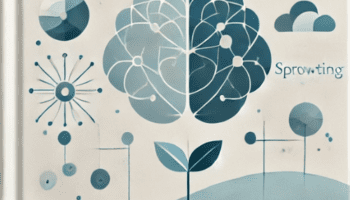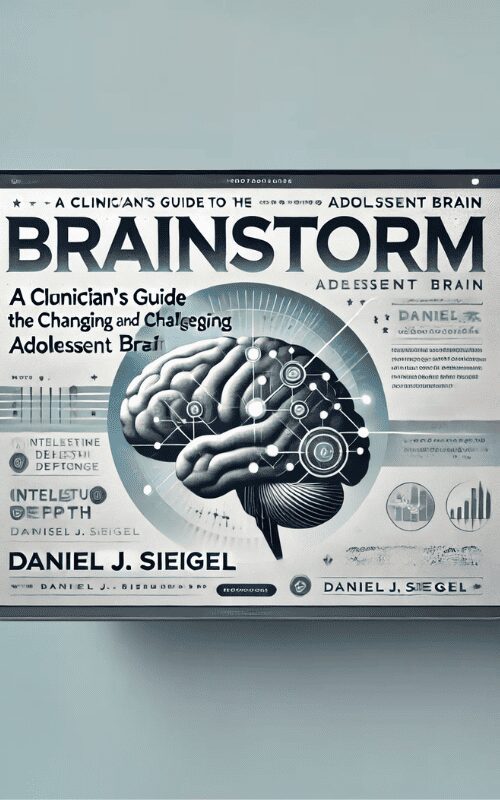Brainstorm -A Clinician’s Guide to the Changing and Challenging Adolescent Brain – Daniel J. Siegel
Brainstorm -A Clinician’s Guide to the Changing and Challenging Adolescent Brain – Daniel J. Siegel has the same quality as the author’s salapage.
Overview
Salepage check: Brainstorm -A Clinician’s Guide to the Changing and Challenging Adolescent Brain
Author: Daniel J. Siegel

- Faculty:
- Daniel J. Siegel
- Duration:
- 5 Hours 54 Minutes
- Format:
- Audio and Video
- Copyright:
- May 09, 2014
Description
Are you struggling to effectively treat behavior disorders, anxiety, and mood disorders in children and adolescents?
New York Times bestselling author, world-renowned neuropsychiatrist and bestselling co-author of The Whole-Brain Child, Daniel J. Siegel, M.D., helps you crack the code of the adolescent brain with groundbreaking research in interpersonal neurobiology based on his newest New York Times Bestselling book, Brainstorm: The Power and Purpose of the Teenage Brain. Dr. Siegel explores how brain development affects teenage behavior and relationships and how mastering this knowledge helps promote more effective psychotherapy, targeted treatment interventions and better understanding between parents and their teens.
You will understand attachment issues in adolescents and strategies for clinical issues including, substance abuse, sexual identity, and many more!
Rather than seeing adolescence as a period of immaturity or dysfunction, this view suggests that the essence of adolescence the emotional spark, social engagement, novelty-seeking, and creative explorations can best be harnessed by supporting these important and necessary aspects of our human development.
Dr. Dan Siegel’s inside out approach to the second dozen years of life gives us an exciting new clinical perspective on the essence of adolescence. Understand the clinical implications of the four pillars of adolescence and discover how these pillars are a necessary set of characteristics that are essential for both the individual development and for the health and adaptation of our species. These features of the teenage brain set the stage for changes that not only shape our life as adolescents, but can surprisingly be seen as essential to thriving in adulthood. How we as clinicians approach adolescence as a period and adolescents as individuals can make all the difference in how these important years are navigated well.
Handouts
| Manual (2.5 MB) | 27 Pages | Available after Purchase |
Outline
Dispelling the popular myths of teenage behavior
- Cultural myths
- Modern scientific views
The Essence of Adolescence
- Benefits and challenges of this important period of life
- How the essential elements of adolescence are the core of living a vital adult life as well
- The myths vs. modern scientific views
- Risk-taking, pushing-away, and sexual behavior of adolescence
- Adolescence is now longer than ever before, creating unique stressors
The Adolescent Brain
- The developmental neurobiology of the adolescent period
- Pruning and myelination leads to the remodeling of the brain into the mid-twenties
- Risk-taking behaviors and the origin of hyper-rational” thinking overemphasizing the pros of a choice over the possible cons
- Develop gist thinking” that relies on intuition
- Exercises that stimulate the integrative growth of the brain
Adolescence and Attachment
- Attachment toward parents changes during adolescence
- Push toward peer connections
- Social engagement becomes a central part of teen life
- Early life attachment continues to influence the adolescent’s relationships and the emerging self
- Move non-secure attachment models toward security
- Mindsight skill practices”:
- Mind
- Brain
- Relationships
Clinical Strategies: Staying Present Through Changes and Challenges
- Emergence of a sexual identity and sexual relationships
- Romance and first love
- Drug use and abuse
- The return home of an adolescent who has already left for a period of time
- Other issues
- The most common period for the onset of serious psychiatric problems:
- Mood disorders
- Anxiety
- Disturbances in body image and identity
- Role of our cultural approach to the essence of adolescence
- Other issues
- Social media
- Nutrition
- Divorce
- Education
Faculty

Daniel J. Siegel, M.D. Related seminars and products: 48
Neuropsychiatrist
Mindsight Institute
Dr. Siegel is a clinical professor of psychiatry at the UCLA School of Medicine and the founding co-director of the Mindful Awareness Research Center at UCLA. He is also the Executive Director of the Mindsight Institute which focuses on the development of mindsight, which teaches insight, empathy, and integration in individuals, families and communities.
Dr. Siegel received his medical degree from Harvard University and completed his postgraduate medical education at UCLA. He served as a National Institute of Mental Health Research Fellow at UCLA. Dr. Siegel serves as the founding editor for the Norton Professional Series on Interpersonal Neurobiology which contains over seventy textbooks. He has also authored several books, five of which are New York Times bestsellers: Aware: The Science and Practice of Presence, Mind: A Journey to the Heart of Being Human, Brainstorm: The Power and Purpose of the Teenage Brain, and two with Tina Payne Bryson, Ph.D: The Whole-Brain Child and No-Drama Discipline.
Dr. Siegel’s ability to make complicated concepts exciting as well as easy to understand has led him to be invited to address local, national and international organizations where he speaks to groups of educators, parents, public administrators, healthcare providers, policy-makers, clergy and neuroscientists. He has been invited to lecture for the King of Thailand, Pope John Paul II, His Holiness the Dalai Lama, Google University, and TEDx. For more information about his educational programs and resources, please visit: www.DrDanSiegel.com
Speaker Disclosures:
Financial: Dr. Daniel J. Siegel is the executive director of the Mindsight Institute. He is an author for W.W. Norton publishing and receives royalties. He is an author for Bantam publishing and receives royalties. He is an author for Guilford Press and receives royalties. He is an author for Tarcher/Penguin and receives royalties. He is an author for Random House and receives royalties. He receives a speaking honorarium from PESI, Inc.
Non-financial: Dr. Daniel J Siegel is a clinical professor at UCLA School of Medicine. He does not receive compensation.
Curriculum
FAQs
Requirements
- Device Compatibility: A computer, tablet, or smartphone with internet access.
- Software: A PDF reader or compatible software to access digital materials.
- Time Commitment: Approximately 10-15 hours to fully engage with course materials.
- Interest: An understanding of clinical psychology or working knowledge of adolescent development is beneficial but not mandatory.
Features
- Authoritative Insights: Authored by Dr. Daniel J. Siegel, an expert in neuroscience and clinical psychology.
- Comprehensive Content: Covers the intricacies of the adolescent brain, emotional regulation, and neuroplasticity.
- Evidence-Based Strategies: Practical methods to guide adolescents toward healthier emotional and social development.
- Accessible Format: All materials are digital, ensuring you can study anytime, anywhere.
- Cost-Effective: Save up to 80% compared to the original SalePage.
- No Extra Features: Focus on the essential course content without added distractions like forums or certifications.
Target audiences
- Mental health professionals, including psychologists, counselors, and therapists.
- Educators and school counselors dealing with adolescent behaviors.
- Parents or caregivers seeking a deeper understanding of teenage development.
- Medical professionals such as pediatricians or general practitioners interested in adolescent brain health.
- Students or trainees in psychology and education.








